When it comes to door hardware, door hinges are often overlooked, yet they play a vital role in the functionality, durability, and aesthetics of doors. Whether you're working on a residential, commercial, or industrial project, choosing the right type of door hinge can make a significant difference. In this guide, we'll explore the most common types of door hinges—butt hinges, pivot hinges, concealed hinges, and more—to help you make the best choice for your application.
1. Butt Hinges
One of the most widely used types, butt hinges are found in almost every home. Comprising two plates (also known as leaves) that are joined by a central pin, butt hinges are ideal for standard doors, cabinet doors, and lightweight doors.
Pros:
● Easy to install
● Inexpensive and widely available
● Suitable for interior and exterior doors
Best For:
● Interior wooden doors
● Cabinet doors
● Lightweight entry doors
Heavy Duty Hydraulic Door Hinges With Self Close
2. Pivot Hinges
Pivot door hinges allow a door to pivot from a single point at the top and bottom, rather than swinging from the side. These hinges are commonly used in modern architectural designs and commercial buildings, where aesthetics and durability are key considerations.
Pros:
● Sleek appearance with minimal visible hardware
● Supports heavy doors
● Allows for a smooth swing in either direction
Best For:
● Heavy doors
● Frameless glass doors
● Contemporary interior design
3. Continuous Hinges (Piano Hinges)
Continuous hinges, also known as piano hinges, run the entire length of the door. They distribute weight evenly, reducing stress on the door and frame.
Pros:
● Excellent weight distribution
● Durable and long-lasting
● Enhanced security
Best For:
● Commercial doors
● Storage units
● High-traffic doors
4. Concealed Hinges (European Hinges)
Concealed hinges are commonly used in cabinetry and modern interior doors. They are hidden when the door is closed, offering a clean and seamless look.
Pros:
● Invisible when the door is closed
● Adjustable for perfect alignment
● Sleek and modern appearance
Best For:
● Kitchen cabinets
● Modern minimalist doors
● High-end furniture
3D Adjustable Concealed Door Hinge for Invisible Door
5. Ball Bearing Hinges
These heavy-duty hinges are fitted with ball bearings between the hinge knuckles, reducing friction and wear. They are ideal for doors that see frequent use.
Pros:
● Smooth operation
● High durability
● Long lifespan
Best For:
● Commercial entry doors
● Metal doors
● High-traffic areas
6. Strap Hinges
Strap hinges have long leaves that extend across the surface of the door, providing extra support. They are often used in barn doors, gates, and decorative applications.
Pros:
● Rustic and decorative
● Offers strong support for large doors
● Easy to install
Best For:
● Barn doors
● Garden gates
● Decorative rustic furniture
7. Spring Hinges
These self-closing hinges have a spring mechanism that automatically returns the door to its closed position. Often found in fire-rated doors and garages, spring hinges offer both convenience and safety.
Pros:
● Auto-close functionality
● Enhances security
● Fire-rated options available
Best For:
● Garage doors
● Fire doors
● Office doors
Stainless Steel Single Action Spring Hinge
8. H-Hinges and HL-Hinges
Used for decorative purposes and old-style cabinet doors, H-hinges and HL-hinges offer both function and flair. These hinges are shaped like the letters “H” and “HL” and are surface-mounted.
Pros:
● Classic and vintage appearance
● Easy to install
● No mortising required
Best For:
● Vintage cabinets
● Decorative furniture
● Restoration projects
Choosing the Right Door Hinge
When selecting the right door hinge type, consider the following factors:
● Weight of the door: Heavier doors require more robust hinges, like pivot or ball bearing hinges.
● Frequency of use: High-traffic areas need durable solutions such as continuous or ball-bearing hinges.
● Aesthetic preferences: For modern or minimal designs, opt for concealed or pivot hinges.
● Functionality: If a self-closing or two-way swing is needed, consider spring or pivot hinges.
Door Hinge Materials and Finishes
The material of a door hinge affects its durability and appearance. Common materials include:
● Stainless steel: Corrosion-resistant and durable
● Brass: Attractive and ideal for decorative purposes
● Zinc-plated steel: Affordable and rust-resistant
Popular finishes for door hinge hardware include:
● Satin nickel
● Oil-rubbed bronze
● Matte black
● Polished chrome
Choosing a finish that complements your door hardware and room decor enhances both function and aesthetics.
Final Thoughts
Understanding the different types of door hinges is essential for making informed design and construction decisions. Whether you’re installing butt hinges for residential doors, pivot hinges for modern aesthetics, or spring hinges for safety, selecting the right hinge ensures optimal performance, durability, and visual appeal.
If you're looking for custom door hinge solutions, Sunda offers a wide range of customizable hinge types for residential, commercial, and industrial applications. Whether you need a heavy-duty hinge for a steel door or a decorative hinge for bespoke furniture, Sunda can manufacture hinges tailored to your specifications in materials, sizes, finishes, and performance features. Choose Sunda for reliable, durable, and high-precision door hinge manufacturing to match your project’s exact needs.
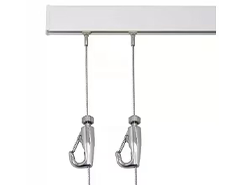
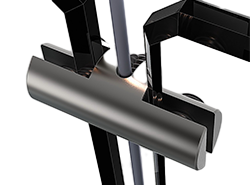






_31221.png)